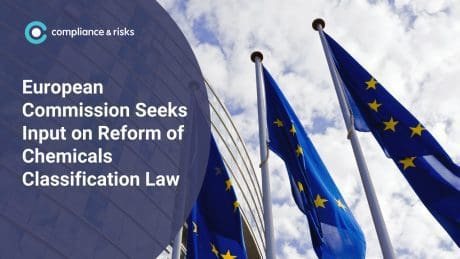
New RoHS Stakeholder Consultation

 The Oeko Institut announced a new stakeholder consultation on 26th October 2018 on two aspects of the RoHS Directive1:
The Oeko Institut announced a new stakeholder consultation on 26th October 2018 on two aspects of the RoHS Directive1:
- Additional RoHS substances methodology; and
- A new RoHS substances inventory.
This consultation will end on 21st December 2018.
Methodology
A draft methodology document has been published2. This has revised the Austrian UBA methodology and, importantly, Oeko has revised the interpretation of Article 6 to define when a substance restriction is justified. Oeko state that this is when “the use of a substance could give rise to uncontrolled or diffuse releases into the environment (Article 6(1)(b)) a restriction may now also be justified”. The substance would also need to be classified as hazardous, although this is not mentioned in the summary but is described in detail in the methodology report.
The proposed methodology consists of:
- Create an inventory of substances that are used in electrical and electronic equipment (EEE), i.e. occur in EEE
- Selection of hazardous substances that are used in EEE
- Selection of substances that are used in EEE and are of concern during use and at end of life (i.e. excluding during manufacture of EEE).
- Prioritization of substances which should take into account its current legal status (i.e. existing restrictions)
- Collect data on hazards to human health and the environment
- Identify waste streams
- Determine exposure during use and/or waste treatment (i.e. excluding manufacture of EEE)
- Evaluate impacts and exposure risks for end users, workers and the environment
- The other impacts of article 6.1a will also be evaluated
- Evaluate suitability and hazardous properties of substitutes
- Socio-economic assessment
- Nanomaterials will also be separately assessed.
The proposed methodology appears comprehensive and includes the assessment of risk of harm to humans and the environment from exposure to uncontrolled release of the substance during use and end of life only, which seem sensible. Excluding manufacture is reasonable as this is better regulated by the REACH Regulation and the Industrial Emissions Directive.
Inventory
Creation of an inventory is the first stage of Oeko’s proposed methodology. To facilitate this, Oeko has provided an Excel spreadsheet which lists 815 substances and asks:
- Are these process chemicals only or do they occur in EEE?
- What are the main uses?
- Are they nanomaterials?
- What are the ranges of quantities used in EEE placed on the market in the EU?
- What sources of data inform these answers?
To complete the entire spreadsheet will be a huge task and beyond the capabilities of any one manufacturer of EEE. Oeko will clearly need as many manufacturers as possible to provide data on the substances that they make or use and so have useful data.
It will be important for manufacturers of EEE to submit constructive comments to help to produce a useful and workable methodology. Manufacturers should be aware that NGOs and Member States will also submit comments and some of these may not be helpful to industry and may be over-cautious, resulting in unnecessary restrictions.
1http://rohs.exemptions.oeko.info/index.php?id=302
2http://rohs.exemptions.oeko.info/fileadmin/user_upload/RoHS_Pack_15/2nd_Consultation/Pack_15_Substance_Review_Manual_Methodology_first_Draft_20181022.pdf
If you would like to find out how you can stay on top of regulatory issues related to hazardous materials and substances, sign up to our newsletter here.








